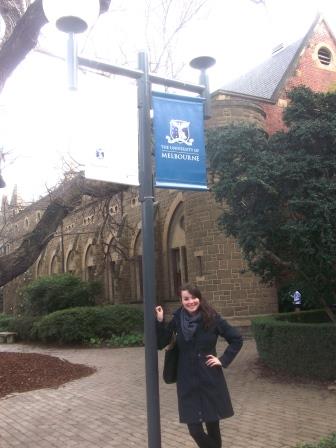Melbourne Engineering xLabs: the power of gaze tracking
A Melbourne School of Engineering researcher has developed software that can automatically work out where users look on their screen, using a standard webcam. Thanks to the support of the Melbourne Accelerator Program (MAP), Australia’s preeminent entrepreneurship program, new Melbourne start-up xLabs aims to provide a low-cost eye and gaze tracking service for private and public users.

Combining webcams and software, xLabs have addressed eye-tracking in a unique way. Unlike other eye tracking systems, the xLabs approach does not require expensive hardware or continuous recalibration to determine where users are looking. This means analysis can be carried out in a variety of settings, extending the scope for gaze tracking research.
“Our goal in creating xLabs was to capture human intention and behavior that could not be inferred from keyboard and mouse interactions. As webcams have become a fundamental feature in computers, this approach offers an ideal way to achieve this,” says co-founder and computer science PhD Alan Zhang.
Traditionally, eye-tracking is known for its contribution to user-interaction studies, where marketers and web designers use gaze-tracking information to give their digital architecture a competitive edge. However, xLabs’ functionality extends far beyond this, stepping into the realm of video gaming and education.
“In gaming, eye-tracking has the potential to replace or augment existing controllers, giving computer gamers an edge. In Massive Open Online Courses (MOOCs), eye-tracking can monitor engagement and use active intervention when the user loses interest and disengages with the material.”
Looking toward the future, Alan envisions gaze tracking as a ubiquitous mode of user input, with close relations to voice and sound input.
“You could ask questions like, “Computer, what is that?” And the computer will be able to pull up information on the object you’re looking at. With this technology, we could build the Star Trek Computer.”
xLabs strongly believe that computers should be companions, not dumb droids. With eye-tracking, they hope to create a human place in the web, that’s easier to interact with.
Originally posted by Kristen Goodgame on The Melbourne Engineer.
Engineering and IT at the University of Melbourne
Engineering and IT at the University of Melbourne has ranked number 1 in Australia across four engineering and technology discipline areas according to the latest QS World University Rankings by Subject. For Computer Science and Information Systems, the University of Melbourne has been ranked 1st in Australia and 15th in the world.
Electrical and Electronic Engineering also improved its rank, up to number 1 in Australia and 28th in the world, up from 32 in 2013.
At a faculty level, the QS Rankings placed Engineering and Information Technology a at the University of Melbourne at number 1 in Australia and 32 in the world.
Apply to a University of Melbourne engineering or IT program!
*

































Ask A Question
Ask us about your program of interest, or if you have a question about our services.
CONTACT US TODAY